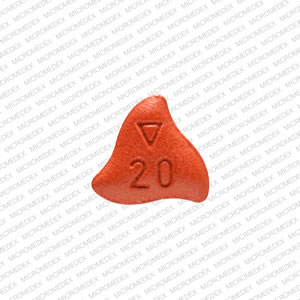Xarelto Disease Interactions
There are 6 disease interactions with Xarelto (rivaroxaban).
- Bleeding
- Valvular heart disease
- Antiphospholipid syndrome
- Hepatic impairment
- Renal disease
- Unstable blood pressure
Factor Xa inhibitors (applies to Xarelto) bleeding
Major Potential Hazard, Moderate plausibility.
The use of factor Xa inhibitors is contraindicated in patients with active pathological bleeding as these agents increase the risk of bleeding and can cause serious or fatal hemorrhages. Caution is recommended when prescribing factor Xa inhibitors to patients at increased risk of bleeding, including patients undergoing procedures where bleeding may cause serious complications. Such patients include those undergoing spinal/epidural anesthesia or spinal puncture; these patients are at high risk of an epidural or spinal hematoma, which can result in long-term or permanent paralysis. In general, when using factor Xa inhibitors, the risk of thrombotic events should be weighed against the risk of bleeding.
Factor Xa inhibitors (applies to Xarelto) valvular heart disease
Moderate Potential Hazard, Moderate plausibility. Applicable conditions: Prosthetic Heart Valves, Mitral Stenosis
The use of some factor Xa inhibitors (including apixaban, edoxaban, and rivaroxaban) is not recommended in patients with prosthetic heart valves; safety and efficacy have not been established in such patients.
Oral anticoagulants (applies to Xarelto) antiphospholipid syndrome
Moderate Potential Hazard, Moderate plausibility.
Direct acting oral anticoagulants including factor Xa inhibitors and some thrombin inhibitors as dabigatran, are not recommended for use in patients with antiphospholipid syndrome (APS). Treatment with these drugs has been associated with increased rates of recurrent thrombotic events, especially in patients with triple positive APS.
Rivaroxaban (applies to Xarelto) hepatic impairment
Moderate Potential Hazard, Moderate plausibility. Applicable conditions: Liver Disease
The use of rivaroxaban should be avoided in patients with moderate and severe liver dysfunction (Child-Pugh B and C) or with any liver disease associated with coagulopathy as drug exposure and bleeding risk may be increased.
Rivaroxaban (applies to Xarelto) renal disease
Moderate Potential Hazard, Moderate plausibility. Applicable conditions: Renal Dysfunction
For most indications, rivaroxaban exposure and pharmacodynamic effects are increased in patients with CrCl less than 30 mL/min compared to patients with normal renal function; these indications include treatment of deep vein thrombosis (DVT), treatment of pulmonary embolism (PE), reduction in the risk of recurrence of DVT and/or PE, prophylaxis of DVT after hip/knee replacement surgery, and prophylaxis of venous thromboembolism in acutely ill medical patients at risk for thromboembolic complications not at high risk of bleeding. Limited clinical data are available in patients with CrCl 15 to less than 30 mL/min, and there are no clinical data in patients with CrCl less than 15 mL/min (including those on dialysis). Patients with CrCl 15 to less than 30 mL/min should be observed closely and any signs/symptoms of blood loss should be evaluated promptly; use of rivaroxaban should be avoided in patients with CrCl less than 15 mL/min (including those on dialysis). This drug should be discontinued in patients who develop acute renal failure while on treatment.
In patients with nonvalvular atrial fibrillation, renal function should be periodically assessed, as clinically indicated (i.e., more often in situations in which renal function may decline), and therapy should be adjusted accordingly; dose adjustment or discontinuation of rivaroxaban should be considered in patients who develop acute renal failure during therapy.
In patients with coronary artery disease or peripheral artery disease, no dose adjustment is needed based on CrCl.
Rivaroxaban (applies to Xarelto) unstable blood pressure
Moderate Potential Hazard, Moderate plausibility. Applicable conditions: Hypotension
Initiation of rivaroxaban is not recommended acutely as an alternative to unfractionated heparin in patients with pulmonary embolism who present with hemodynamic instability or who may receive thrombolysis or pulmonary embolectomy.
Switch to professional interaction data
Xarelto drug interactions
There are 391 drug interactions with Xarelto (rivaroxaban).
More about Xarelto (rivaroxaban)
- Xarelto consumer information
- Check interactions
- Compare alternatives
- Pricing & coupons
- Reviews (228)
- Drug images
- Side effects
- Dosage information
- Patient tips
- During pregnancy
- Generic availability
- Support group
- FDA approval history
- Drug class: factor Xa inhibitors
- Breastfeeding
Related treatment guides
Drug Interaction Classification
| Highly clinically significant. Avoid combinations; the risk of the interaction outweighs the benefit. | |
| Moderately clinically significant. Usually avoid combinations; use it only under special circumstances. | |
| Minimally clinically significant. Minimize risk; assess risk and consider an alternative drug, take steps to circumvent the interaction risk and/or institute a monitoring plan. | |
| No interaction information available. |
See also:
Further information
Always consult your healthcare provider to ensure the information displayed on this page applies to your personal circumstances.


